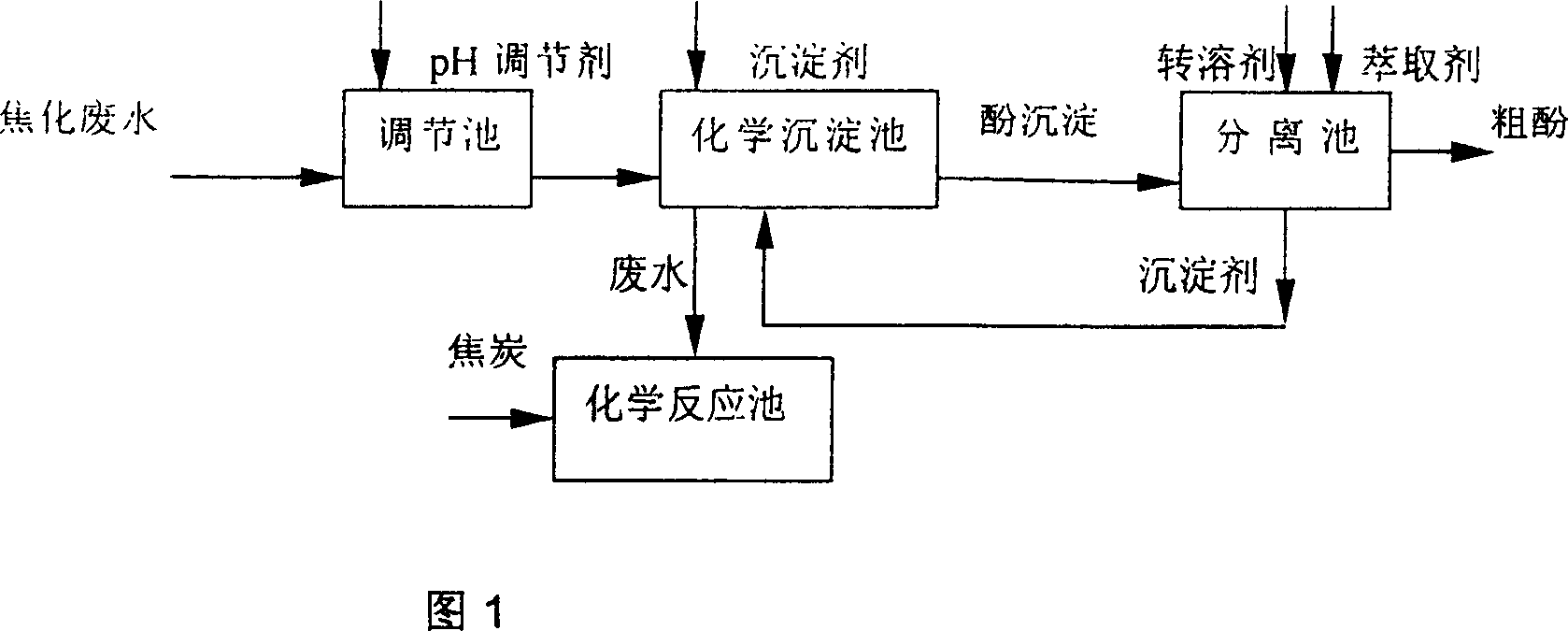Technique for removing and reclaiming phenol from coke-plant waste water
A technology of coking wastewater and technology, applied in water/sewage treatment, chemical instruments and methods, adsorbed water/sewage treatment, etc., can solve the problems of inability to deal with non-volatile phenol, difficulty in desorption, secondary pollution, etc., and achieve the cost of adsorbent. The effect of low cost, simple process operation and convenient operation
- Summary
- Abstract
- Description
- Claims
- Application Information
AI Technical Summary
Problems solved by technology
Method used
Image
Examples
Embodiment 1
[0018] Take the treatment of coking wastewater with a phenol content of 1072.79mg / L in a coking plant as an example:
[0019] 1. At room temperature 30℃, the coking wastewater enters the adjustment tank first, and NaOH is added to adjust the pH of the wastewater to 11.03.
[0020] 2. The effluent from the regulating tank enters the chemical precipitation tank, and barium ions are added to react with phenolic substances for 15 minutes to form insoluble compound precipitation. After filtering, the concentration of water phenol is detected. BaCl 2 ·2H 2 The added amount of O is 2g / L, and the removal rate of phenol is 47.62%. See Table 1 for details.
[0021] 3. The phenol precipitate separated from the chemical sedimentation tank is dissolved with hydrochloric acid, and the precipitant barium ions are reduced for recycling; the phenolate is reconverted into phenol and freed, and then benzene is added for extraction and recovery. The crude phenol is 0.408 per ton of coking wastewater ...
Embodiment 2
[0023] The embodiment and reaction conditions are exactly the same as in Example 1. BaCl 2 ·2H 2 The amount of O added was increased to 4g / L, and the removal rate of phenol was 53.25%. See Table 1 for details. 0.456kg of crude phenol was obtained by treating each ton of coking wastewater.
Embodiment 3
[0025] The embodiment and reaction conditions are exactly the same as in Example 1. BaCl 2 ·2H 2 The amount of O added was increased to 6g / L, and the removal rate of phenol was 60.53%. See Table 1 for details. Each ton of coking wastewater was treated to obtain 0.509kg of crude phenol.
PUM
 Login to View More
Login to View More Abstract
Description
Claims
Application Information
 Login to View More
Login to View More - R&D
- Intellectual Property
- Life Sciences
- Materials
- Tech Scout
- Unparalleled Data Quality
- Higher Quality Content
- 60% Fewer Hallucinations
Browse by: Latest US Patents, China's latest patents, Technical Efficacy Thesaurus, Application Domain, Technology Topic, Popular Technical Reports.
© 2025 PatSnap. All rights reserved.Legal|Privacy policy|Modern Slavery Act Transparency Statement|Sitemap|About US| Contact US: help@patsnap.com

